Race to Alaska
From R2AK.com:
“The inside passage to Alaska has been paddled by native canoes since time immemorial, sailing craft for centuries, and after someone found gold in the Klondike the route was jammed with steamboats full of prospectors elbowing each other out of the way for the promise of fortune.
It’s in the spirit of tradition, exploration, and self-reliance that Race to Alaska was born. R2AK is the first of its kind and North America’s longest human and wind powered race, and currently the largest cash prize for a race of its kind.
It’s like the Iditarod, on a boat, with a chance of drowning, being run down by a freighter, or eaten by a grizzly bear. There are squalls, killer whales, tidal currents that run upwards of 20 miles an hour, and some of the most beautiful scenery on earth.
You, a boat, a starting gun. $10,000 if you finish first, a set of steak knives if you’re second. Cathartic elation if you can simply complete the course. R2AK is a self-supported race with no supply drops and no safety net. Any boat without an engine can enter.
In 2022, 41 teams were accepted and 19 finished.”
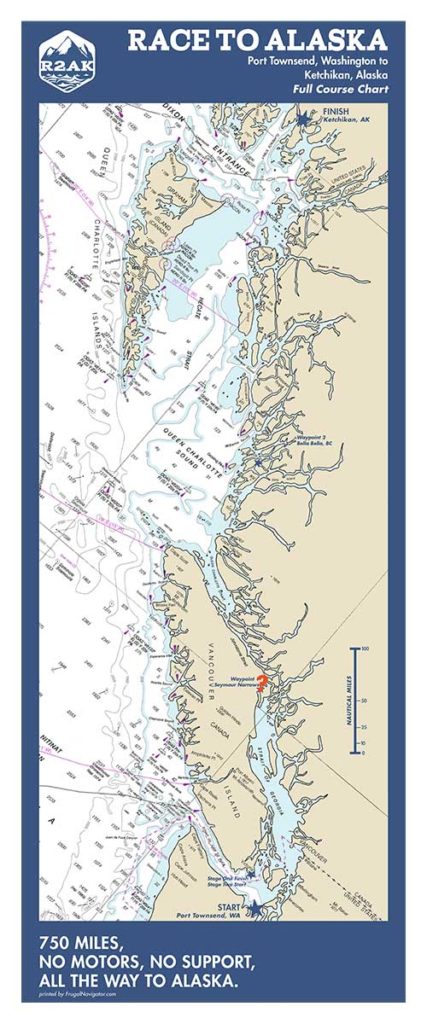
++++++++++++
The Race to Alaska is put on each year by the Northwest Maritime Center, a 501(c)(3) non-profit based in Port Townsend, Washington. The Center mission? To engage people in the waters of our world in a spirit of adventure and discovery.
In 2019, our own Nikki Henderson joined the all-female “First Federal’s Sail Like a Girl” R2AK team. Finishing fourth, the team’s result was largely due to their decision to reverse course to help another team in distress. (The move was without accommodation by race organizers.)
At it again in 2023, Nikki joined R2AK’s “We Brake for Whales” team in her second bid for victory.
Eight people, never having sailed together before, assembled in Port Townsend in early June to prepare for the race. The Stage One shake down from Port Townsend to Victoria gave them a chance to learn about each other and their ship, a heavy water-ballasted 40-foot Lyman Morse sloop made in Thomaston, Maine, aptly named Gray Wolf. The result set the tone. “We Brake for Whales” was first to enter Victoria harbor.
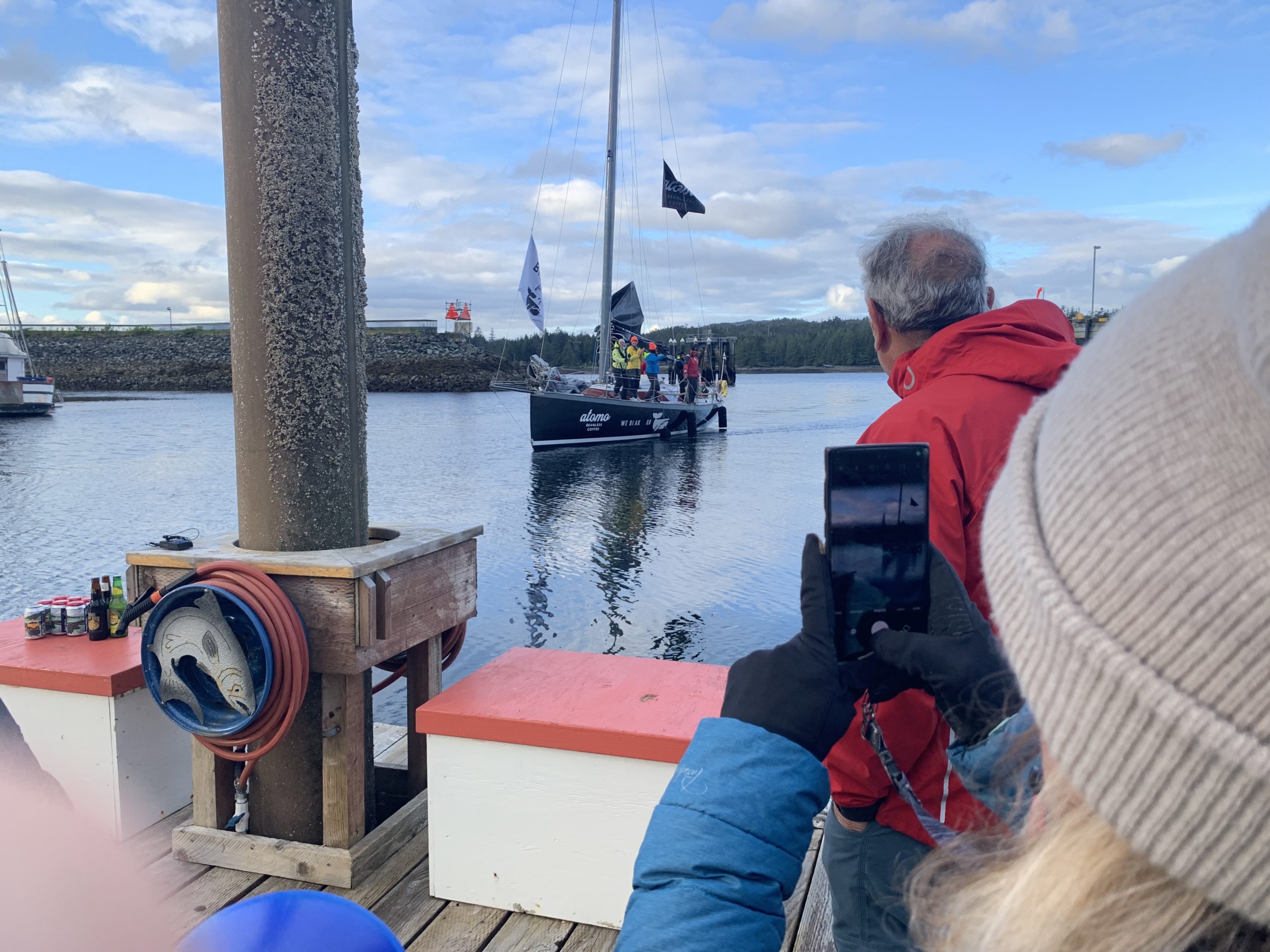
Now came the real Type 2 fun.
Stage Two is a 710-nautical-mile test of skill and stamina through some of the world’s trickiest waters. With no official course and only one required waypoint, racers choose their own way north. To start, most opt to go inside Vancouver Island to avoid foul winds and waves on the island’s west coast. This year was no exception.
The only hitch? Racers must cope with finicky tidal currents, including 15-knot rips through the Seymour Narrows about half way up the island. Entering at the wrong time, especially without a motor, invites disaster. This natural gate must be transited as close to slack as possible, forcing lead boats to wait as slower boats catch up.
Team We Brake for Whales was among the first through the narrows and beyond, carried by strong following currents into Johnstone Strait toward the top of the island. It was there that the die was cast for how the 2023 R2AK would play out.
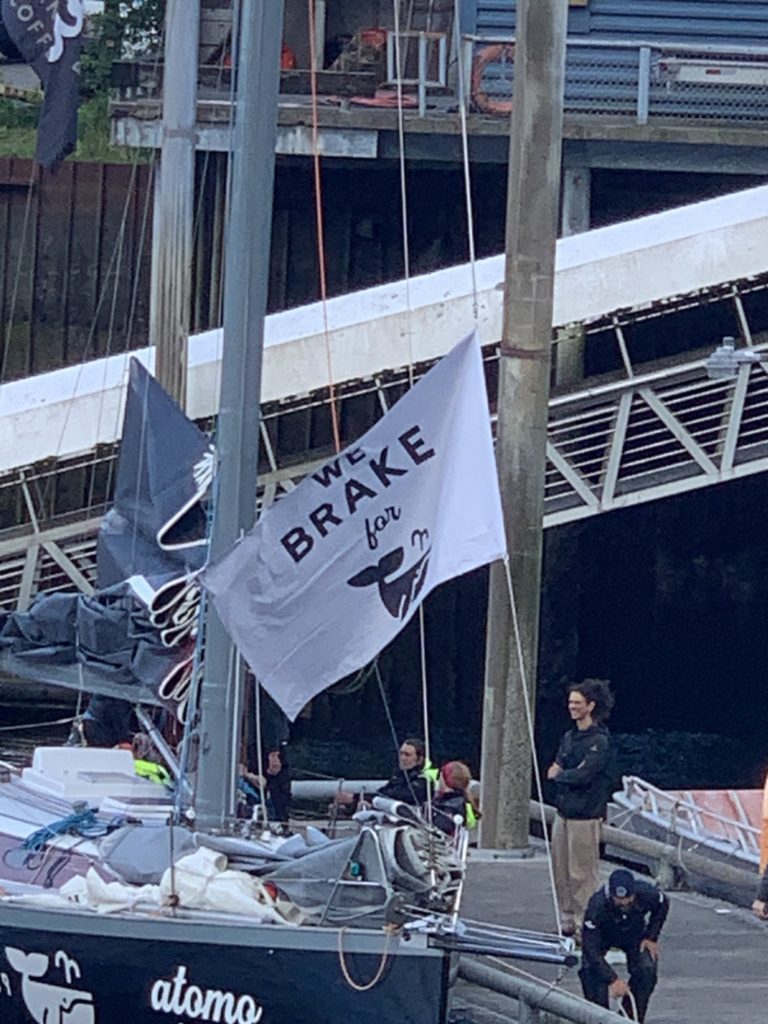
Northwest winds set in as the racers emerged from the protected waters behind Vancouver Island. Forecast to build over the next few days, it quickly became clear the conditions would work in Gray Wolf’s favor.
With a stout, stiff monohull, and large, strong crew, including five veteran offshore racers and four past R2AK finishers, Team We Brake for Whales steadily outpaced the competition. The contenders piloted multihulls, trimarans mostly, which proved incapable of pointing high enough to match Gray Wolf’s progress. What’s more, their less sturdy composition was soon revealed through broken halyards and delaminated hulls. One by one, the followers took refuge from the headwinds as Gray Wolf and her crew tacked faithfully upwind for three days, sometimes into near gale 30-knot winds, turning a 710-nautical-mile race into an 850-nautical-mile trial.
By the time Team We Brake for Whales crossed into the U.S., they had built a 60-nautical-mile lead. Fifty nautical miles later, they entered Thomas Basin in Ketchikan under wind and pedal-prop power, docked, and rang the victory bell at 5:59 a.m. on June 14th, more than one and a half days ahead of the second-place finisher.
On hand to greet the victors was a small cadre of race officials, media representatives, and crew friends and family, including Christine and me, the crew of S/V Windleblo, who came equipped with a flugelhorn and whistle to blast as Gray Wolf approached the dock in the early morning chill.
Having sailed our own version of the race to Alaska, S/V Windleblo and crew covered a more meandering course from Vancouver through the Salish Sea, Queen Charlotte Sound, middle BC Coast, Fjordland Recreational Area, and Inside Passage to Prince Rupert, then across the Dixon Entrance and on to Ketchikan in a short 15 days. That put us in town in time to greet Nikki as she arrived victorious and be part of the evening dinner where she and her shipmates received the $10,000 first prize for the 2023 R2AK.
A retirement celebration for Christine, many whale, sea lion, seal, sea otter, grizzly bear, and bald eagle sightings, several hot spring soaks, the Prince Rupert Seafest, and following breezes were among the highlights of the Windleblo’s voyage to Ketchikan. A few more images of the voyage and Nikki’s reception follow.
Read more about Nikki’s victory at https://r2ak.com/2023-daily-updates/stage-2-day-8-team-we-brake-for-whales-a-boat-a-team-a-disease/
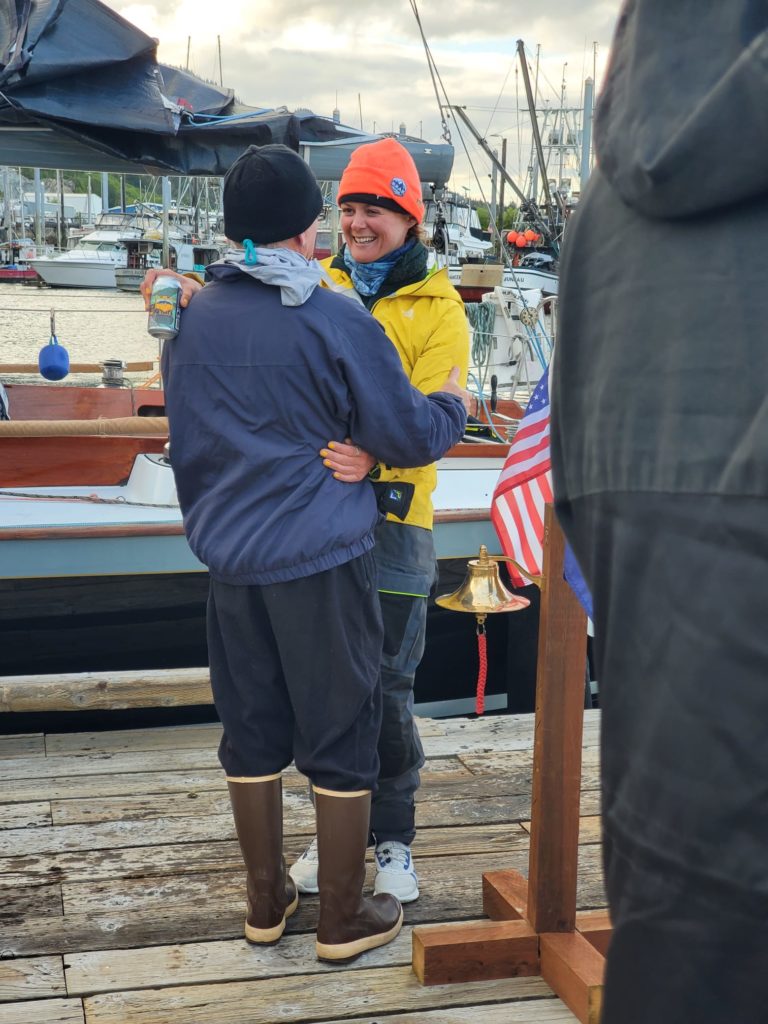
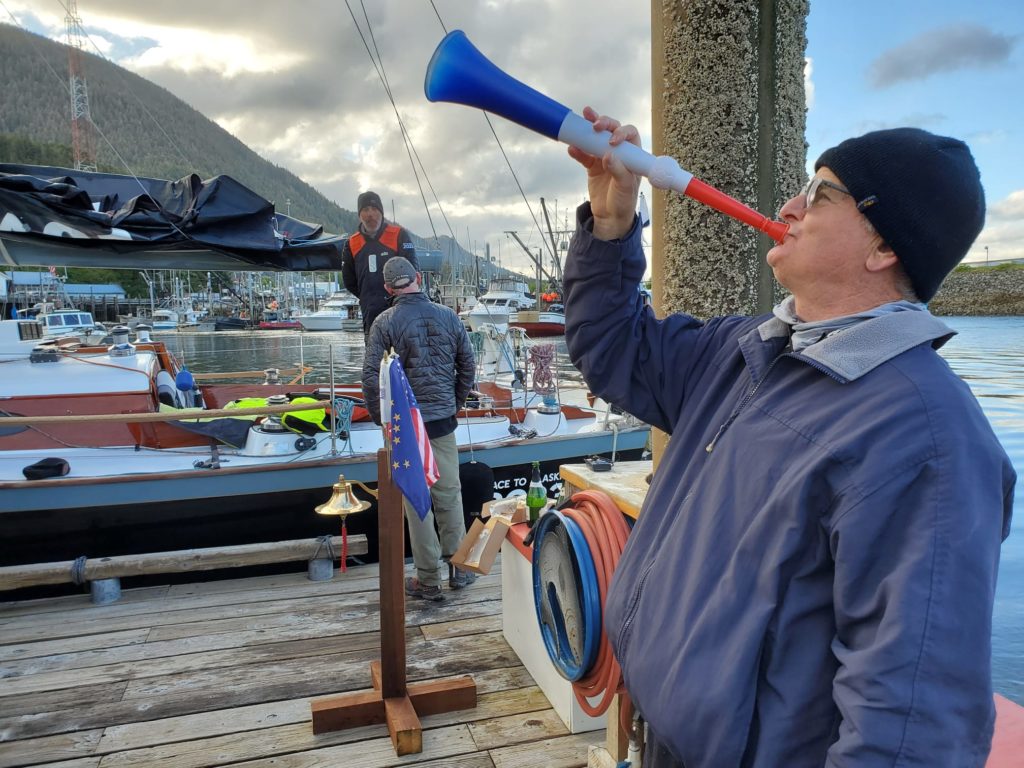
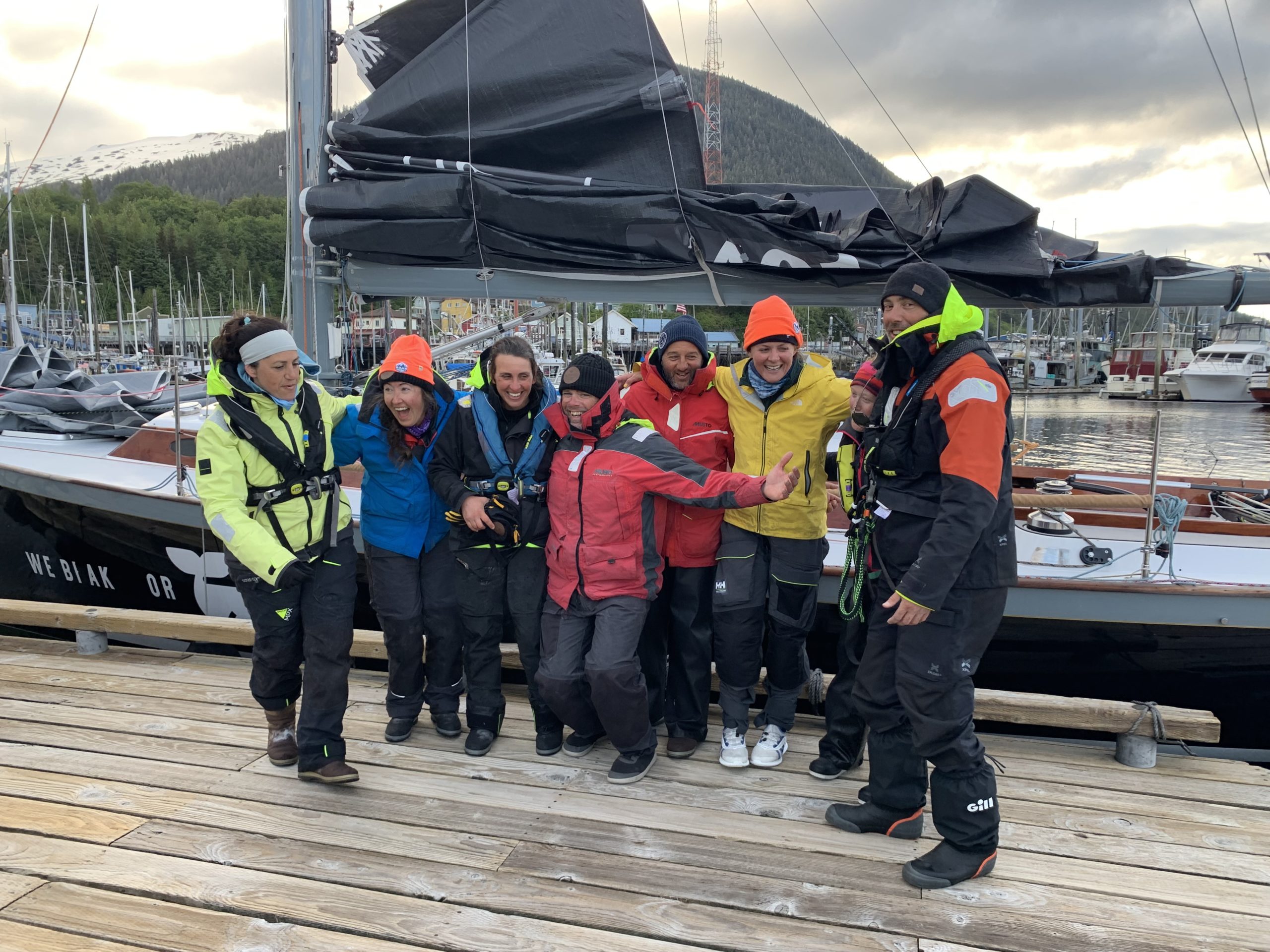
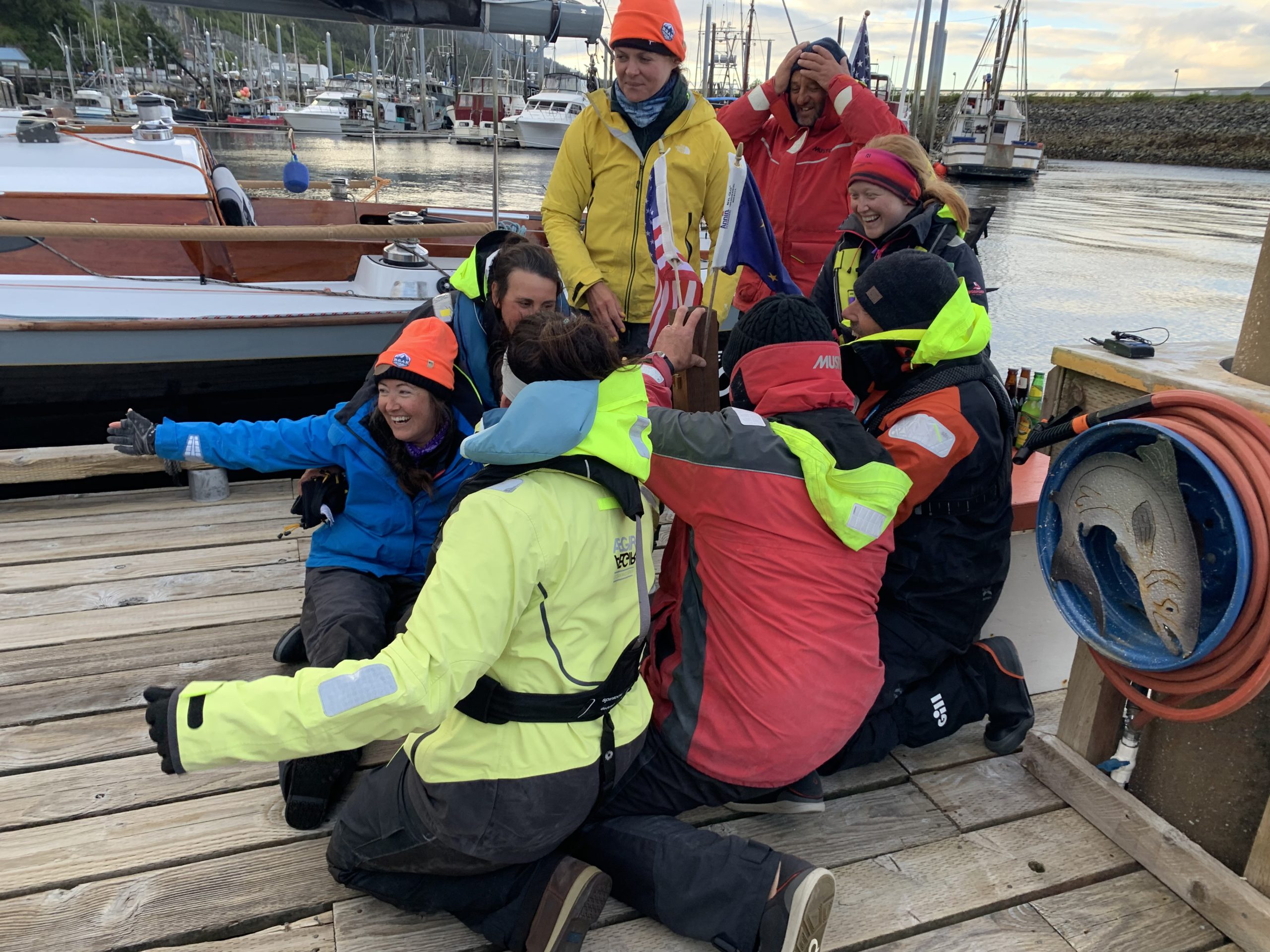
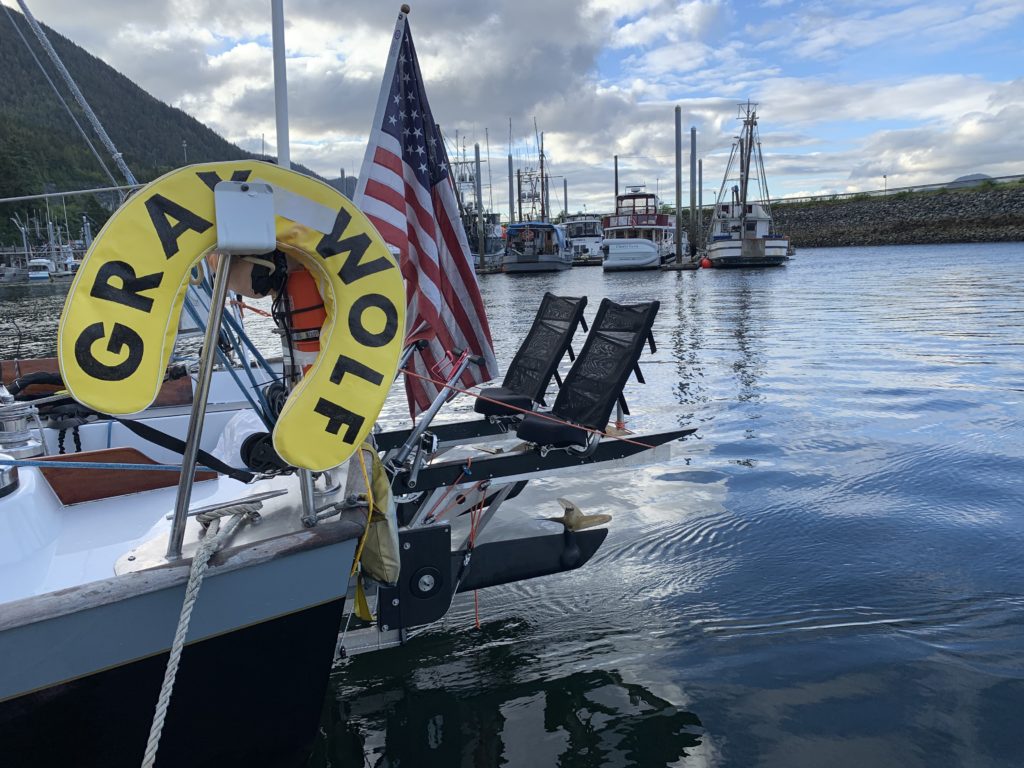
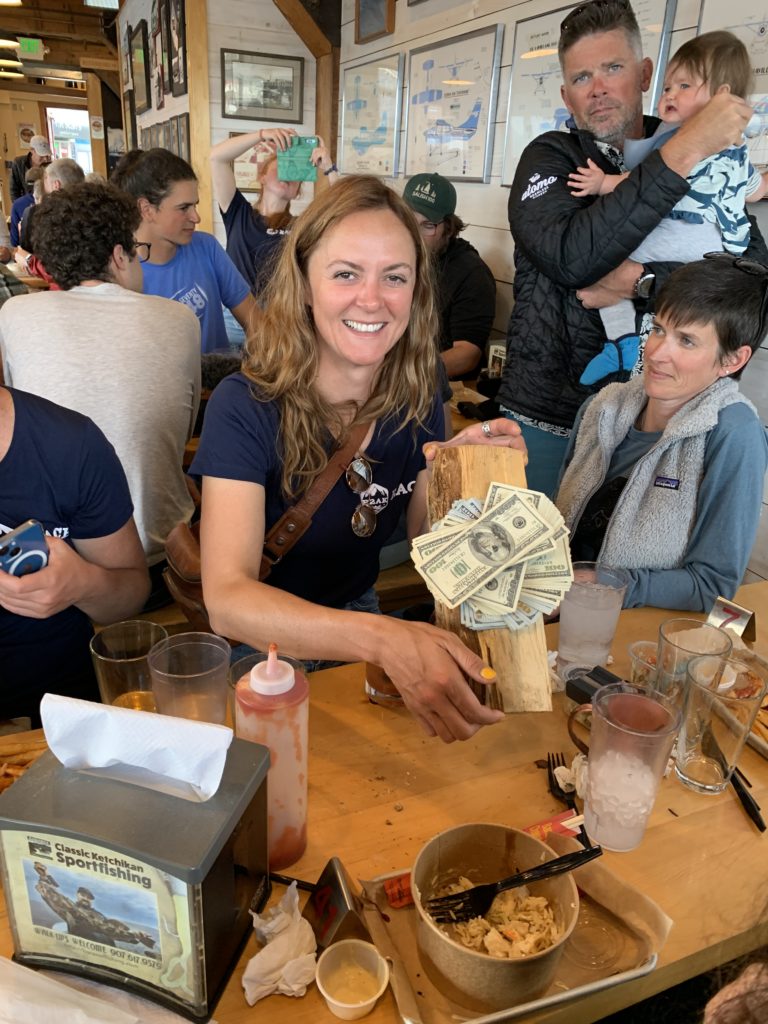
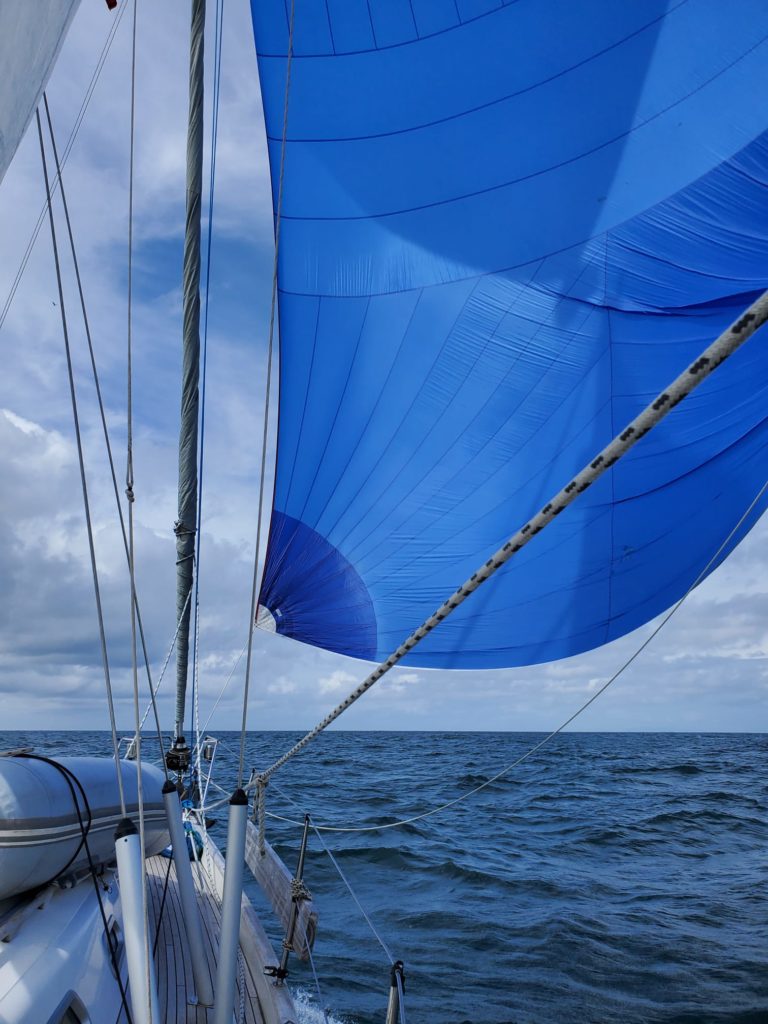
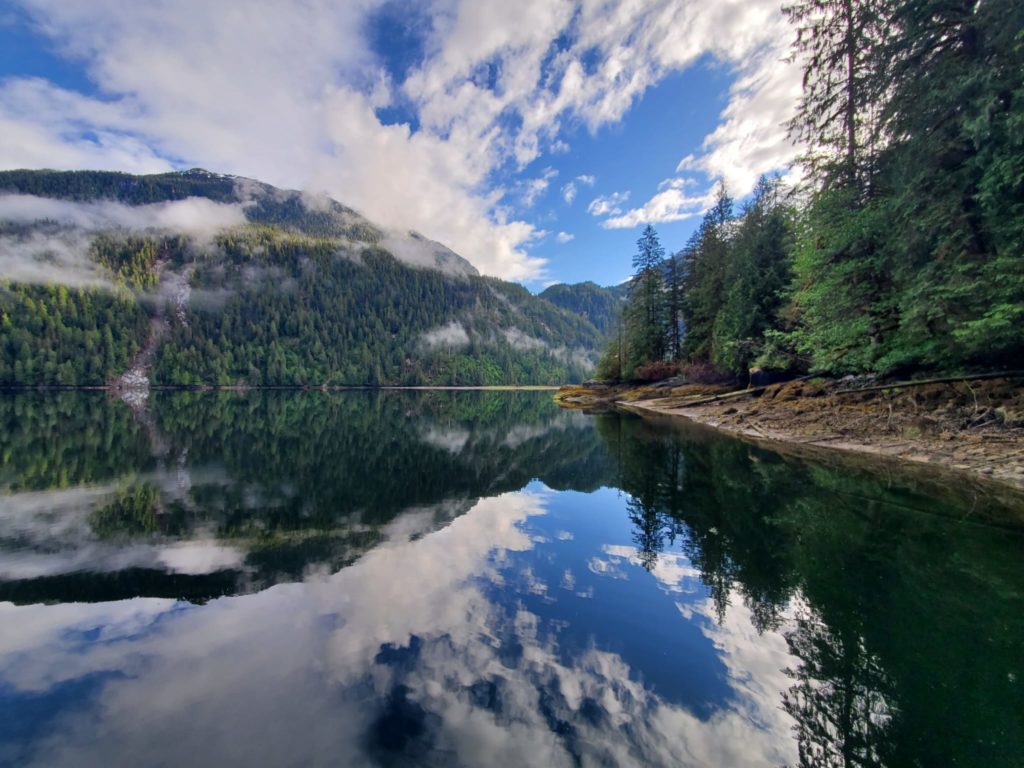
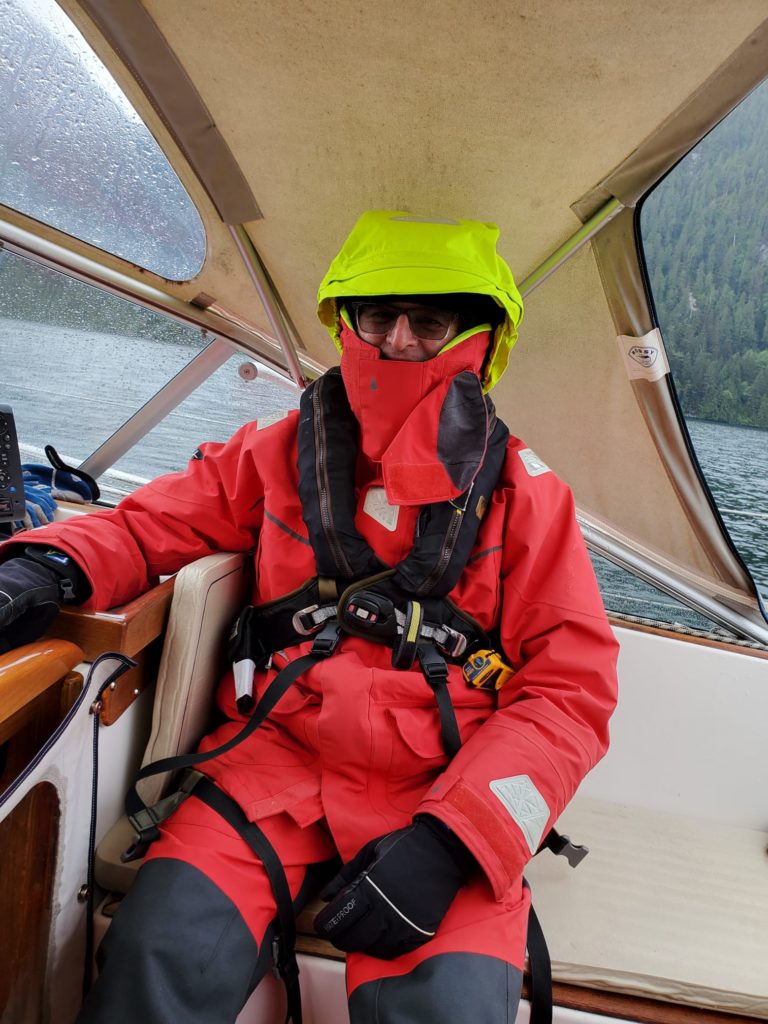
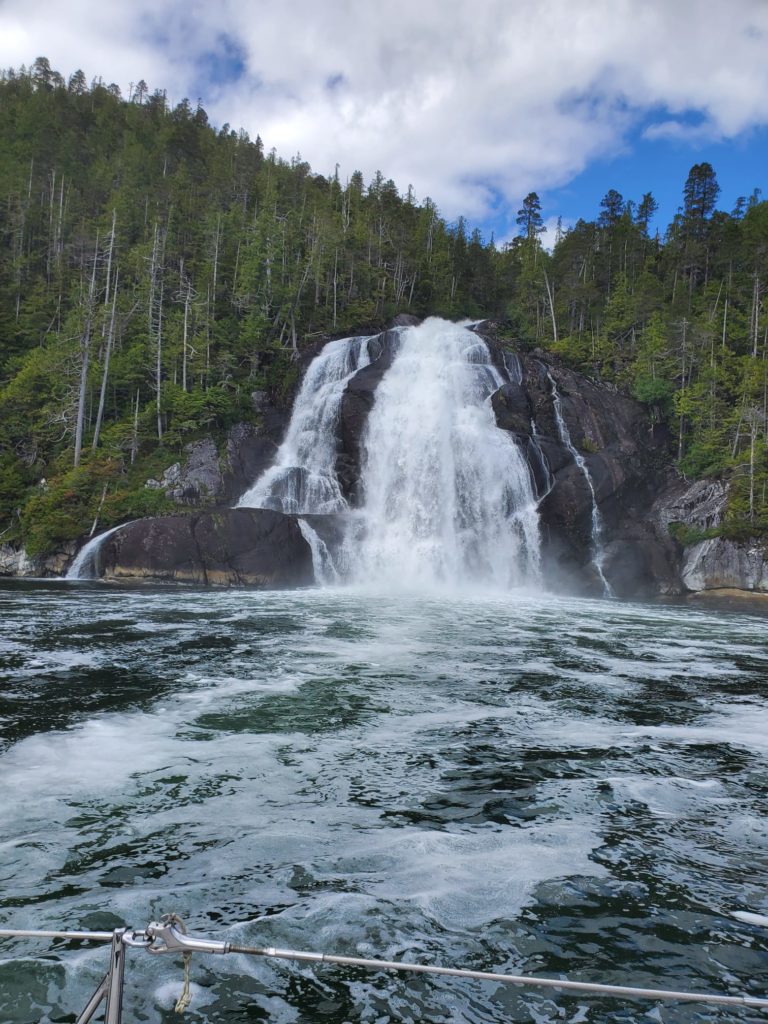

Awesome!!